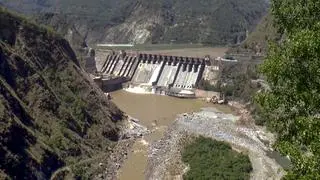Govt slashes floor revenue, zero upfront payment to encourage underground coal mining

India wants to enhance production from underground mines to 10% of the country’s total output by the end of the current decade from less than 4% currently.
| Photo Credit:
Ahmad Masood
In a bid to boost underground coal mining, the Coal Ministry has reduced the floor percentage of block revenue share for such mines by half to 2 per cent, which it expects will offer substantial fiscal relief and enhance financial viability.
India wants to enhance production from underground (UG) mines to 10 per cent of the country’s total output by the end of the current decade from less than 4 per cent currently.
Compared to opencast (OC) mining, UG mining requires higher initial investment, longer gestation period and higher production cost. However, it is minimally invasive on land, detours land acquisition avoiding its degradation and is environmentally clean, the Ministry said.
Revenue share
To encourage higher production from UG blocks, the floor percentage of revenue share for such coal mines has been reduced from 4 per cent to 2 per cent, a senior government official said.
That apart, block allocatees have to deposit an upfront amount which is calculated at 0.2 per cent of the value of estimated geological reserves subject to a prescribed ceiling. This requirement has also been waived off, he added.
The Ministry already offers a 50 per cent rebate on performance security for UG coal blocks, collectively lowering the entry threshold and facilitating smoother project implementation, the official emphasised.
Mining experts say that UG mining entails higher costs compared to open cast (OC) mining, with cost per tonne being more than double.
However, with growing mechanisation such as use of continuous miner, it’s possible to extract higher quantities of the dry fuel from deposits deeper in the ground. Besides, it is more environment friendly, leads to lesser land and displacement of people.
The latest step by the Ministry is also to check the declining contribution from UG mines in the country’s overall coal production. For instance, UG mines accounted for almost 8 per cent of India’s overall coal output in FY15, which fell to 3.5 per cent by FY24 (provisional).
In fact, production from UG mines fell consecutively for six financial years from 48.51 mt in FY15 to 32.21 mt in FY21.
Production of the dry fuel from such blocks rose to 33.18 mt and 34.85 mt during FY22 and FY23, respectively. However, UG mine coal production again declined to 34.71 mt in FY24 on a provisional basis.
The Jhanjra mine of Eastern Coalfields (ESL), a CIL subsidiary, is the country’s highest producing mechanised underground mine with a capacity of 3.5 million tonnes per annum.
More Like This

Published on April 28, 2025




